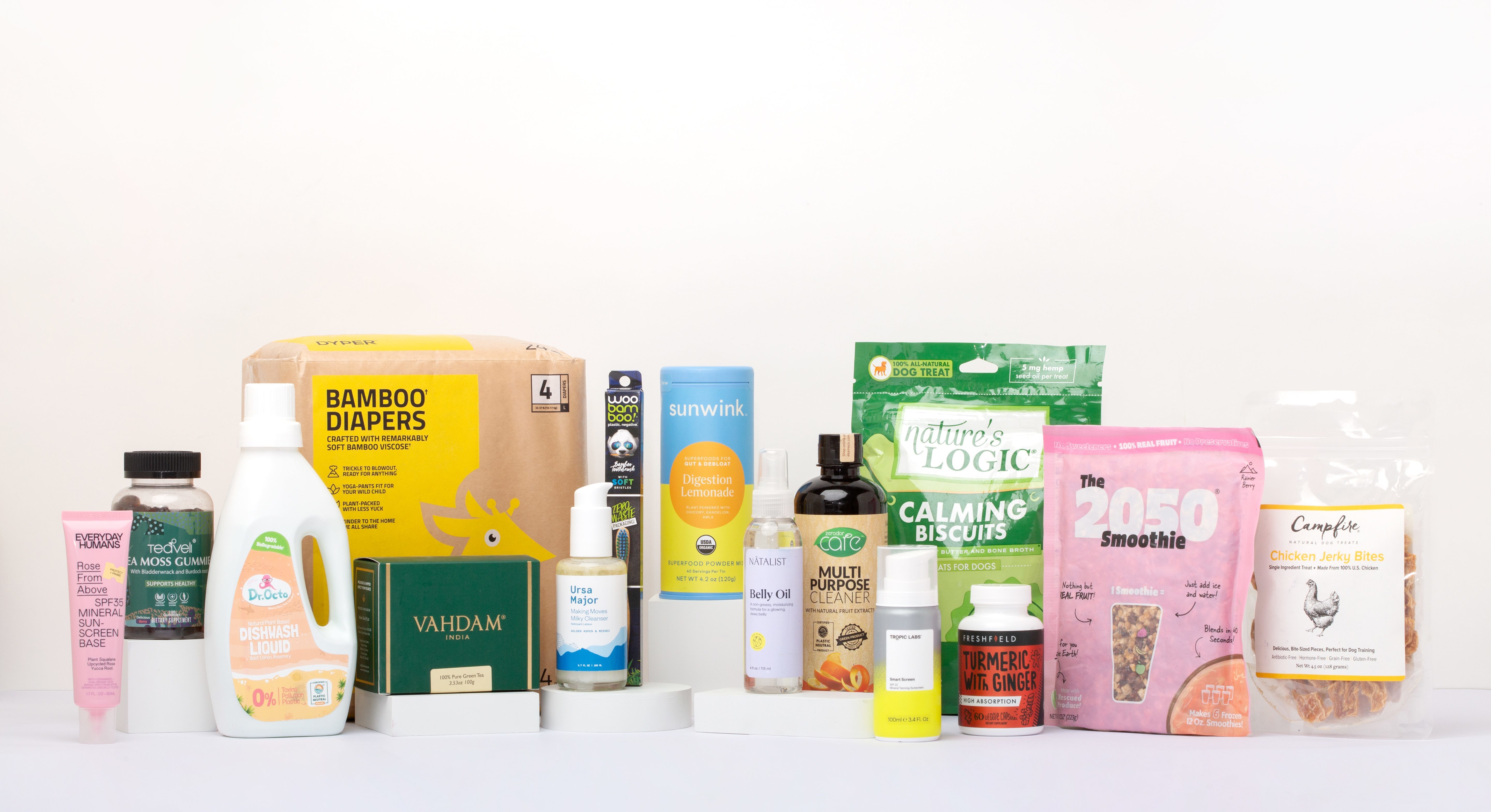Plastic Reduction Strategy Template for Your Brand
This quick template can help you get started on mapping out an effective, comprehensive and realistic plastic reduction strategy.
You’ve heard about a lot of different reduction options, and you can’t do it all at once. So what could a reduction strategy look like for your brand?
Let’s walk through a templated plastic reduction strategy, complete with examples and timelines.
As discussed earlier, the first step is to measure plastic use and conduct a comprehensive analysis. What plastics are you using? How recyclable are they in the countries you’re selling into? Where ‘upstream’ are you using plastic to produce your products? Are there ‘downstream’ plastic uses to get your products to market? This analysis will help guide your actions and allow you to prioritize the most impactful steps.
Let’s imagine that analysis is done and you’re focusing on your products and their packaging. There are 5 components listed below in this example strategy.
Templates:
- Choose a specific SKU (from identified plastic hotspots) and use PCR content, bio-based content, or compostable material in its primary packaging by the end of 2026 (2 year timeframe). For example:
- Replace lavender shampoo bottle with 100% PCR bottle by 2026;
- Incorporate 50% PCR into pet food bag by 2026;
- Make all snack product wrappers at home compostable by the end of 2026.
- Reduce secondary packaging (this can be done on a 1-3 year timeframe). For example:
- Use reusable packaging materials such as paperboard cartons, corrugated boxes, trays/films by the end of 2026;
- Replace all virgin plastic poly bags with PCR poly bags by the end of 2025;
- Replace all plastic tape with paper tape by the end of 2024.
- Remove unwanted materials used in your products by the end of 2025 (1 year timeframe). For example:
- Remove tear offs (e.g. from jars, water bottles and from the openings of any flexible packaging);
- Stop using unnecessary plastic films to wrap the product and plastic windows in boxes or envelopes;
- Stop use of secondary cardboard boxes or secondary lids.
- Create a reusable or refillable option for a SKU that is compatible with a current refill technology (3-5 year timeframe). For example:
- Turn a personal care product into a concentrate that can go in a reusable container or made into a solid product (i.e. laundry detergent, multi-purpose solution, shampoo, etc.) by the end of 2028.
- If you have a storefront, create a refill, drop off, or “bring your own container” program for your customers by the end of 2027.
- Find other ways to reduce plastic! There are so many ways to reduce. Here are a few more ideas to use as templates for your reduction goals:
- Ensuring all primary packaging is recyclable, compostable, or reusable by 2025
- Start using FSC certified paper instead of plastic labels across your product portfolio by 2025
- Evaluate your plastic waste value chain to realize the use of unnecessary plastic packaging by 2025
- Replace office or workplace snacks with plastic free options, buy snacks in bulk, and eliminate the use of plastic coffee pods - by next week!
You can read more about strategies to reduce plastic usage in your packaging here.
Get Started with Verified Plastic Recovery for your Brand
rePurpose Global is here to support your sustainability roadmap with impactful and measurable Plastic Action solutions that deliver immediate results. Partner with us to measure your plastic footprint, fund plastic waste recovery, and create strong sustainability messaging for your brand.
Talk to our team to explore how we can work together.

Related Posts
Plastic Reality Project - Impact in India
rePurpose Global launched the Plastic Reality Project to inspire sustainability leaders and spark more effective action to tackle plastic pollution. Our inaugural cohort kicked off in fall 2022 with a week-long trip to Tamil Nadu and Kerala in India. This photo essay below walks through some of the highlights from the experience
rePurpose Global's Social Safeguards for Verified Plastic Recovery Projects
rePurpose Global's impact projects support waste workers and their communities. They are designed to overcome many of the injustices faced by waste workers, and to provide new and better opportunities for workers and their communities. Read on to see how rePurpose Global has enshrined this in a guiding set of safeguards for projects, workers, and communities.
The Plastic Waste Crisis: Examining Global Responsibilities and Solutions
Discover actionable strategies for businesses to combat plastic pollution. Understand how plastic reduction and recovery are both important tools while mapping a holistic sustainability action roadmap.





.jpg)









